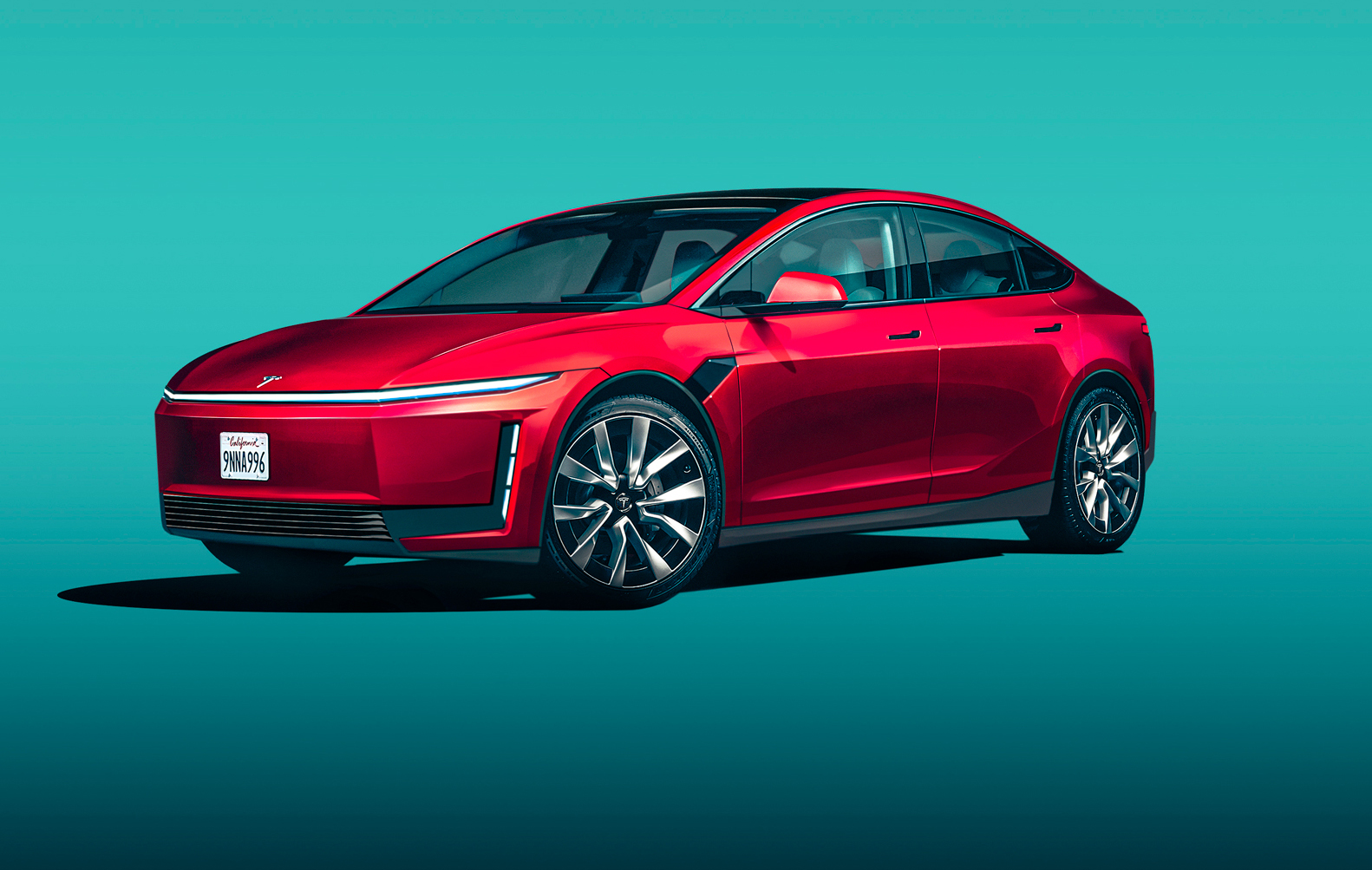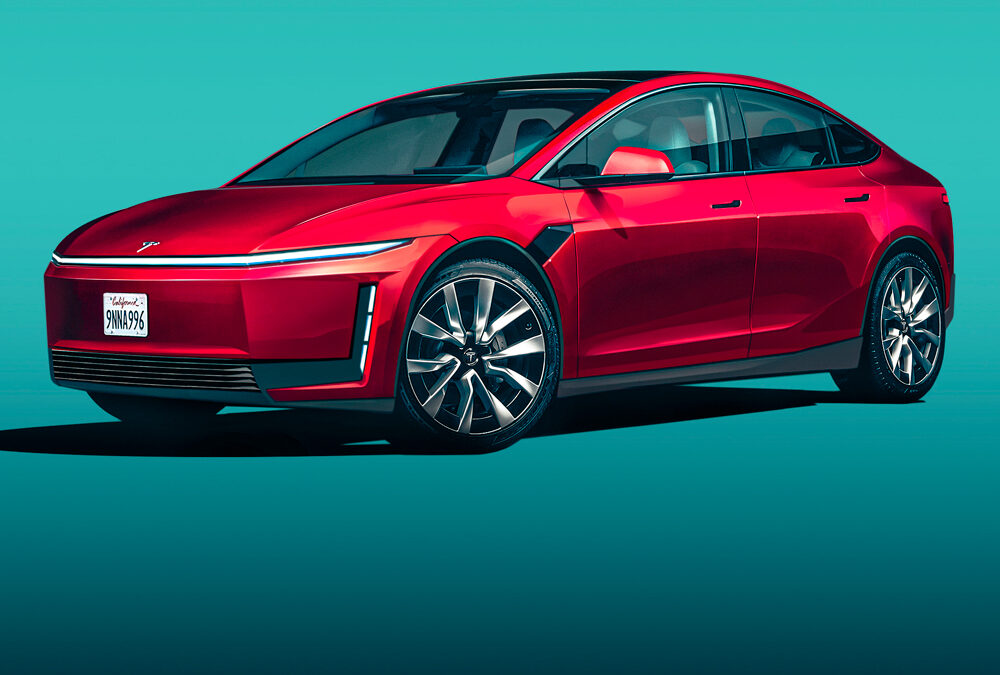How China killed the Tesla Model 2

Chinese brand Omoda currently has 56 dealers in the UK. These aren’t pop-up stores, ‘brand experience centres’ or any other type of marketing-led retail mash-ups. These are glass-and-tile showrooms run by gritty dealer groups such as Hartwell, Peter Vardy and Listers, dealers used to shifting metal in sizeable numbers. Omoda targets 100 dealers by the end of the year, from zero at the beginning. Repeat: zero.
If you’ve never heard of Omoda, clearly that won’t be the case for long. It’s part of a trend that is going to hit not just ‘legacy’ makers of petrol cars, but also EV-only brands including Tesla, and it’s not just happening in the UK.
Omoda is owned by Chery, the car company that runs a joint venture with JLR in China and is also the country’s largest exporter of vehicles. The launch cars are compact SUVs – one petrol, one EV – priced from just over £25,000.
More models are planned, and in five years Omoda will be challenging Kia in terms of sales, UK head Victor Zhang promised CAR. Such is the competitive zeal of the Chinese car industry, you wouldn’t take the bet.
Already this year MG – owned by China’s SAIC – outsold Skoda, Renault and Seat and is closing in on Vauxhall in ninth place.
The competitive advantage held by the Chinese is largely within EVs. The drivetrain that delivers the cut in emissions demanded by legislators in the battle to halt global warming is also the one that the Chinese have bet on so successfully, scaring the hell out of established OEMs.
‘We’ve never seen a competitor like this before,’ Ford CEO Jim Farley said of China earlier this year.
China is a unique competitor because companies there aren’t playing by the same financial rulebook
Farley has been frank about the challenge of matching the cost and speed of the Chinese manufacturers. Ford has switched its electric model strategy twice in an attempt to keep up. ‘We believe that the fitness of the Chinese in EVs will eventually wash over our entire industry in all regions,’ Farley said.
Even Tesla has changed strategy, abandoning its plan for the entry Model 2 for what analysts are now dubbing Model 2.5, cheaper than current cars but adapting their platform to avoid the need for a wholesale, ground-up redesign. The car will launched ‘in the first half of next year’ Tesla CEO Elon Musk said in July.
Did the threat of Chinese competition kill Model 2? Almost certainly. Never the speediest, Tesla knows it can’t move fast enough to develop a new mainstream affordable model and be sure it won’t be eclipsed at launch.
China is a unique competitor because companies there aren’t playing by the same financial rulebook. State support is rife. Just how much was revealed by the European Commission in published evidence for its decision to impose higher tariffs on Chinese EVs imported into the European Union.
Among the state-directed financial benefits enjoyed by BYD, SAIC and Geely – the three companies the Commission sampled – were gold-plated AAA credit ratings, giving them access to cheap loans. The Commission, however, found they didn’t have assets to cover their short-term debt obligations, making them much higher risk than the rating suggests.
Perhaps the greatest gift from the Chinese government was early and decisive orchestration of the battery market, right down to the raw materials. The European Commission noted that ‘input suppliers are not free-market operators but entities which performed the assigned governmental functions’. The system guarantees that favoured battery companies including BYD secure the cheapest supply of materials.
This Chinese-on-Chinese competition in the UK promises a new level of cut-throat pricing
On the evidence, EU has proposed tariffs of up to 46 per cent depending on the level of state support, a more nuanced approach than the US and Canada’s flat 100 per cent tariff. The UK has yet to show its hand.
The state direction is only part of the story. Cut-throat competition within China’s own market ensures that home-grown car companies are fighting tooth and nail for competitive advantages in manufacturing, technology and quality.
Amid that battle, the best companies have blown past the legacy players in a market that between January and July accounted for almost two thirds of the global EV and plug-in hybrid sales, according to figures from SNE Research. Globally, BYD is fast catching global market leader Tesla in terms of EV-only sales at 835,000 units against Tesla’s 954,000 in the same timeframe.
In the UK, MG is looking to press its advantage as it replaces almost its entire range over the next few months. Pricing is still the main weapon. ‘We have manufacturing advantages building cars in China, but we also still see the need to undercut the competition to get market share,’ David Allison, head of product and planning, said at the launch of the new HS compact SUV.
The petrol version is almost exactly the same price as the Omoda 5 at £24,995. Also an option: a plug-in hybrid with a whopping 75-mile range. At £31,495, it undercuts the VW alternative by over £10,000.
This Chinese-on-Chinese competition in the UK promises a new level of cut-throat pricing if the no-prisoners discount war among car makers in China itself is anything to go by. Any flabbiness in the fitness levels of European competitors needs to be pumped out pronto, or a slow death awaits.

